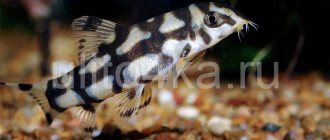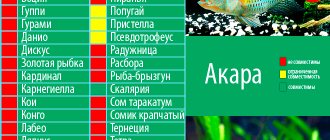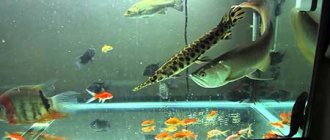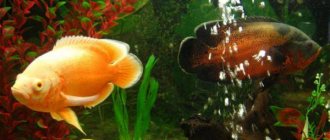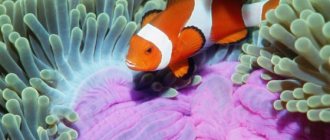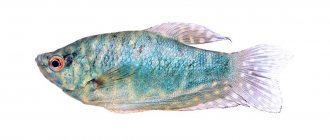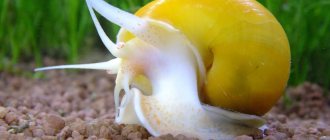Recently, many aquarists have kept an amazing silver-colored fish with black stripes. It is called marble botia or lohakata. The British call this fish Pakistani loach or YoYo Loach. The name YoYo was given to the bot by photographer Ken Childs because in some individuals the stripes on the body merge and look like the YoYo inscription.
The homeland of this benthic creature is India and Pakistan. There they live in ponds with stagnant water. Fishes living in India are brighter in color than their Pakistani relatives.
Introduction
Increasingly, the attention of aquarists is attracted by a small fish of the loach family, Marbled Botsia or Lohakata.
In Latin this fish is called Botia almorhae, the English version is Pakistani loach. There is another version of the English name - the bot is called YoYo Loach. This strange name was given to the fish by photographer Ken Childs. While filming his report, he noticed that the stripes on the body of some specimens merged and formed the YoYo mark. In his work, he called this original creature that way. The name was remembered and is still used by English-speaking aquarists.
— Advertising —
Indian and Pakistani water bodies are considered the homeland of the marbled botia. Experts note differences in coloring: individuals that live in Pakistan are noticeably paler than those that live in India. Scientists do not yet have a consensus on whether the named color variations should be considered different species or subspecies.
The first description of the marbled borer was given in 1920 by the scientist Narayan Rao. Like most loaches, it loves to swim in the bottom layer of water and be nocturnal. Botsia do not like strong currents and live in ponds and lakes with standing water.
The body of the marble botia has a silvery tint with vertical stripes of dark color. When bots reach sexual maturity, their body acquires a blue tint. The mouth opening is wrapped towards the bottom (this is typical for all species that look for food at the bottom), and there are two pairs of whiskers at the edges of the mouth. When stressed, the color of the fish fades and it is able to pretend to be dead.
Under natural conditions, marbled botia grows up to 15.5 cm in length; the size of aquarium specimens is only about 6.5 cm.
— Advertising —
If well maintained, they can live from 5 to 8 years. There is information about specimens whose lifespan is 16 years or more.
Description of the aquarium fish, photo
Marbled Botsia (Lohakata, Botia Lohachata) is a fish from the Botsia family. In wildlife, it is found in small fast rivers and streams flowing in India, Bangladesh and Pakistan. Marbled Botia was first used in the aquarium business in 1912, and was brought to Europe only in 1956.
Many sources indicate that Marble Botsia has another name - Almora.
Botia Lohachata and Botia Almorhae are two separate species that are quite similar in appearance, but do have some differences.
To avoid confusion, experts suggest leaving the name “Marble Botsia” for Almora, and using the epithet “Mesh” for Lohakat.
Marble Botia Lohakata
As for the appearance of Lohakat, first of all it should be noted that during their long life (up to 20 years in favorable conditions) they are able to grow up to 15 cm. The body is elongated, oblong, the mouth is turned down, since Bots prefer to pick up food from the bottom. There are several pairs of antennae around the mouth, with the help of which the fish study the ground.
The main color is dull, shades vary from gray-green to silver-blue. Juveniles have a golden-yellow coloring, with dark brown spots and forked stripes running throughout the body. The bizarre pattern resembles the Latin letters Y, O, I, which makes the Marble Botia very noticeable among other inhabitants.
Botia Marble
There are also small stripes on the fins. With age, the marks increase, merge or change their location, so that marble stains appear to form on Lohakat’s scales.
Content Features
Marbled bots are relatively easy to maintain, and in order for the fish to feel comfortable, certain conditions must be observed.
Aquarium
Marbled bots are fish that live in schools. To prevent them from suffering from constant stress, it is better to purchase a flock of at least 5 individuals. For such a company you will need an aquarium with a volume of at least 150 liters. Aeration of the water is desirable, for which a compressor is installed in the aquarium. To purify the aquatic environment, install an external high-power filter that would not create a strong water flow.
Water
Marbled bots are picky about the composition of water and sense the slightest impurities of chemical compounds. To fill the aquarium with bots, use settled soft water with a slightly acidic reaction.
Soil and decor
— Advertising —
The decor of the aquarium should bring the environment of the artificial reservoir as close as possible to the natural habitat. Marbled bots love to hide in the bottom space. A soil made of small pebbles or coarse river sand is placed at the bottom of the aquarium (it is necessary so that the particles of the aquarium soil do not damage the lohakata’s body). The aquarium is decorated with stones, grottoes and driftwood, where shelters can be easily arranged.
Compatibility
One of the main advantages of this fish is that it easily gets along with many representatives of underwater fauna. The only exception is large predators, which are not scared off even by the thorns of bots.
In addition, in such situations she will be constantly in a stressful situation. It will begin to hide, refuse food and eventually die.
You should also avoid slow fish, for which active “marbles” can be like an aggressor due to their fuss. That is, all “scrofula” can be classified as such.
Optimal neighbors would be gouramis, barbs, neons, zebrafish, tetras, thorns, cockerels, and angelfish. Often they even add cichlids to them, but these should be small and relatively peaceful species like apistograms.
Video : Behavior of marbled Botia in a general aquarium
What to feed the bot?
Marbled bots are omnivores, like many species of aquarium fish.
To feed these fish, they select such food, particles of which will fall to the bottom - this is where the suckers select their food. Botia are nocturnal creatures, so they are fed in the evening, literally before turning off the lights. When it comes to live food, loaches really like bloodworms and tubifex; they happily eat snails.
Marbled bots are very voracious and eat as much as they are given. To avoid problems with the gastrointestinal tract, fish are fed in small portions.
Feeding
In terms of feeding, the marbled botia is very unpretentious. She can eat both dry and live food without any problems. However, there are some peculiarities here that are worth adhering to.
Overfeeding is very dangerous for bots. It is worth giving the fish as much food as they can eat in 3-5 minutes, and under no circumstances should you leave leftover food in the aquarium.
The diet must include plant nutrition. It is very useful for bots and can save aquarium plants from being eaten by fish. Marbled bots need to be fed a variety of foods, not the same thing. Different foods contain useful vitamins and components, the absence of which in the diet can have a detrimental effect on the health of the fish.
Botia is nocturnal, and therefore it is better to feed it in the evening, with food that easily and quickly sinks to the bottom.
Reproduction of marble bots
The propagation of marbled bots is currently causing a lot of controversy.
According to many Internet sources, marbled bots do not reproduce in captivity. But the author managed to find a detailed description of this process. In marbled bots, pair or group spawning is usually observed. Before spawning, the males swim up to the female and, as it were, lift her with their pectoral fins to the surface of the water, where she releases eggs. Spawning occurs in portions.
During one spawning, the female produces from 3,000 to 5,000 small greenish-gray eggs. Immediately after spawning, the breeding fish are removed so that they do not eat their own brood. After just 16-18 hours, the fry emerge from the eggs and quickly begin to swim. From the moment they appear, they can be given feed that is suitable in size.
After about 30 days, the bot fry grow to 1.5 cm in length.
Diseases of marbled bots
Unfortunately, bots do not have good immunity and resistance to diseases.
Ichthyophthiriasis
Young marbled bots often become ill with ichthyophthyriasis. The body of a sick fish is covered with small white tubercles, similar to semolina. Aquarists often call this disease “semolina.”
The cause of this disease is a single-celled ciliated ciliate, which can be brought into the aquarium along with low-quality food or new fish.
When the first signs of disease are detected, it is advised to slightly increase the water temperature and increase aeration. If the disease has reached an advanced stage, you should consult a specialist and begin drug treatment.
Stress
Marbled bots do not tolerate changes in habitat very well. When stressed, they rush up and down or dive into the corners of the aquarium.
Taking these features into account, when introducing fish into a new aquarium, turn off the lighting. In the twilight, it is easier for the marbled bot to adapt to new conditions and become familiar with the new environment.
Weight loss
Marbled bots, like many of their relatives, sometimes begin to lose weight. It is believed that the cause of “exhaustion” is flagellates of the genus Spironucleus. To get rid of the disease, use antibiotics such as Levamisole or Panacur, which are specially designed for animals.
Interesting Facts
- The color of the marbled botia noticeably fades when the fish is very frightened. Sometimes the stripes on her body merge with the background of the aquarium, and she becomes completely invisible.
- In case of danger, the marbled botia can pretend to be dead if it does not have time to hide in cover.
- It has been noticed that before the rain, marbled borers become more active. According to the observations of aquarists, these fish are able to “predict” rain quite accurately.
- Contrary to popular belief, marble botia is capable of making sounds similar to clicks.
External characteristics
At home, the body length of the fish is about 6-7 cm, and sometimes more. In its natural habitat, the lohakat can grow up to 30 cm. The color of the marbled botia is quite unusual: its body is covered with silver-colored scales, with a slight bluish tint, and on the body and fins of the fish there are dark-colored stripes, they look irregular in shape. The body is oblong, elongated, with a small head. The fish's mouth is turned downwards, this is a distinctive feature of fish that feed from the bottom. Four pairs of whiskers can be seen at the corners of the mouth. The color of the fish may noticeably fade if it is frightened, and the fish itself may appear dead.


